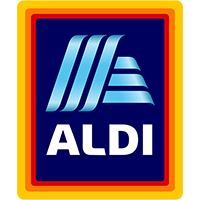Uncover the role of image segmentation in enhancing product quality and customer engagement, detailed.
Image segmentation is a critical process in computer vision that involves dividing a digital image into multiple segments (sets of pixels, also known as image objects) to simplify its representation into something that is more meaningful and easier to analyze. It is the process of partitioning an image into parts that have a stronger correlation with objects or areas of the real world depicted in the image.
Definition: Image segmentation's primary goal is to make an image more understandable and easier to analyze by strategically breaking down the image into its constituent parts or segments. These segments are determined based on characteristics such as color, intensity, or texture. The outcome of image segmentation is a set of segments that collectively cover the entire image, or a set of contours extracted from the image. Each of the pixels in a region is similar with respect to some characteristic or computed property, such as color, intensity, or texture.
Application Areas: Image segmentation has a wide array of applications across various fields:
- Medical Imaging: In healthcare, image segmentation plays a crucial role in medical imaging, helping in the detection and diagnosis of diseases by allowing radiologists to distinguish different tissue types, organs, or pathologies in MRI, CT scans, or X-ray images.
- Autonomous Vehicles: For autonomous driving, image segmentation helps in understanding road scenes by segmenting and identifying different objects such as vehicles, pedestrians, roads, and traffic signs, which is essential for navigation and safety.
- Retail: In the retail industry, image segmentation can be used for analyzing customer behaviors through video surveillance by segmenting and tracking customer movements within a store.
- Agriculture: Farmers use image segmentation for crop monitoring and management by analyzing aerial images to identify crop health, growth stages, and areas requiring attention.
Getting Started with Image Segmentation: Implementing image segmentation involves several key steps:
- Data Preparation: Collecting and preparing a dataset of images for which segmentation is required. This might involve annotating images to train supervised learning models.
- Choosing the Right Algorithm: Depending on the application, different algorithms might be more suitable. Common approaches include thresholding, clustering methods like k-means, edge detection algorithms, and deep learning-based methods such as Convolutional Neural Networks (CNNs).
- Model Training and Testing: For machine learning or deep learning-based approaches, the next step involves training the model on the prepared dataset and testing its performance to ensure it accurately segments the images as required.
- Integration and Deployment: Once the model is trained and tested, it needs to be integrated into the existing workflow or application. This could involve deploying the model to a server for a web application or integrating it into a mobile app.
Technological Considerations: Key factors in successful image segmentation implementation include:
- Accuracy: The precision of the segmentation algorithm in correctly identifying and delineating the different segments within an image.
- Speed: The efficiency of the algorithm, especially if the segmentation needs to be performed in real-time or on large datasets.
- Robustness: The algorithm's ability to handle variations in image quality, lighting conditions, and other environmental factors.
- Scalability: The capability to process images of varying sizes and complexities, and to be integrated into systems with different requirements.
Image segmentation, by enabling the detailed analysis and interpretation of images, plays a pivotal role in numerous applications, from enhancing medical diagnostics to improving the safety of autonomous vehicles. Its implementation requires careful consideration of the specific needs of the application, including the choice of algorithms and the preparation of data.
FAQS
In what ways can image segmentation enhance our product quality control processes?
Image segmentation can significantly enhance product quality control processes by automating the inspection of products for defects, variations, and quality standards. Traditionally, quality control relies heavily on manual inspection, which can be time-consuming, subjective, and prone to human error. Implementing image segmentation allows for the precise and automated analysis of product images, identifying defects such as scratches, dents, or irregular shapes with high accuracy.
For example, in manufacturing, image segmentation can be used to inspect automotive parts for surface defects or to ensure electronic components are correctly placed and soldered on circuit boards. The process involves capturing images of the products on the assembly line and using image segmentation algorithms to analyze the images in real-time. Segments of the image that do not match predefined criteria for quality are flagged for further inspection or removal from the production line.
This automation not only speeds up the quality control process but also enhances its reliability by providing objective, quantifiable data. As a result, companies can significantly reduce the incidence of defective products, leading to higher customer satisfaction and lower costs associated with returns and repairs.
What challenges might we face in deploying image segmentation technologies, and how can we overcome them?
Deploying image segmentation technologies comes with several challenges, including:
- Data Collection and Annotation: Gathering a sufficiently large and diverse dataset of annotated images is crucial for training accurate models. This can be time-consuming and expensive. Overcoming this challenge often involves leveraging synthetic data generation techniques or semi-supervised learning methods that require fewer labeled examples.
- Algorithm Selection and Customization: Choosing the right image segmentation algorithm that suits specific business needs can be daunting due to the variety of available methods. Collaborating with experts in machine learning and computer vision to tailor algorithms to specific tasks can mitigate this challenge.
- Integration with Existing Systems: Integrating new image segmentation solutions with existing IT infrastructure and workflows can be complex. Adopting a modular approach to development, where the image segmentation component is developed and tested independently before integration, can ease this process. Additionally, using APIs for seamless integration and ensuring the new system is compatible with existing data formats and communication protocols is crucial.
- Performance in Varied Conditions: Ensuring the robustness of image segmentation models across different lighting conditions, angles, and backgrounds is challenging. Augmenting training data to include a wide range of conditions and employing robust testing across these scenarios can enhance model performance.
How can image segmentation be applied to improve customer engagement and experience?
Image segmentation can play a pivotal role in enhancing customer engagement and experience in several ways:
- Personalized Recommendations: In retail, image segmentation can analyze customer photos to recommend clothing items or accessories that match their style or body type, providing a personalized shopping experience.
- Interactive Marketing: Companies can use image segmentation in interactive marketing campaigns that allow customers to virtually try on makeup, glasses, or hairstyles using their photos. This not only engages customers in a novel way but also helps them make more informed purchase decisions.
- Enhanced User Interfaces: Image segmentation can improve the user interface of apps and websites by allowing users to interact with images more intuitively. For example, users could select objects within images to see related information or products, making the browsing experience more interactive and engaging.
What support does WNPL offer for integrating image segmentation into our existing digital infrastructure?
While the specific services offered can vary, companies specializing in custom machine learning development and consulting typically provide comprehensive support for integrating image segmentation into existing digital infrastructures, including:
- Consultation and Strategy: Experts work with clients to understand their specific needs and objectives, developing a tailored strategy for integrating image segmentation technology.
- Custom Model Development: Based on the unique requirements of the client, custom image segmentation models are developed and trained to ensure high accuracy and efficiency.
- Integration Services: Technical support for integrating the developed models with the client's existing IT infrastructure, ensuring seamless operation with current systems and workflows.
- Training and Support: Offering training sessions for the client's team to understand and manage the new system effectively, along with ongoing support and maintenance to address any issues and ensure the system remains up-to-date with the latest advancements in technology.
Further Reading & References:
- Author: Jian-Jiun Ding Publisher: Springer Type of Publication: Book Comments: "Advanced Image Segmentation" provides an in-depth exploration of various image segmentation techniques, including traditional methods and recent advancements in deep learning. It's suitable for readers who are new to the field but also offers detailed insights for more experienced practitioners.
- Author: Thomas Deserno Publisher: Springer Type of Publication: Book Comments: "Biomedical Image Processing" covers a wide range of topics within the field, including image segmentation. It's particularly valuable for readers interested in the application of image segmentation in healthcare and medical imaging.
- Author: Lawrence O'Gorman and Michael J. Sammon Publisher: Wiley-Interscience Type of Publication: Book Comments: "Practical Algorithms for Image Analysis" offers a hands-on approach to image processing and segmentation, providing algorithms and code examples. This book is ideal for practitioners looking to implement image segmentation solutions.
- Research Paper: "U-Net: Convolutional Networks for Biomedical Image Segmentation" by Olaf Ronneberger, Philipp Fischer, and Thomas Brox Type of Publication: Research Paper Comments: This seminal paper introduces the U-Net architecture, which has become a standard in the field for medical image segmentation. It's a must-read for anyone interested in deep learning applications in image segmentation.
- Online Reference: TensorFlow Image Segmentation Guide Type of Publication: Online Reference Comments: The official TensorFlow guide to image segmentation provides practical tutorials and examples on implementing segmentation models using TensorFlow. It's an excellent resource for developers looking to apply image segmentation in their projects.










